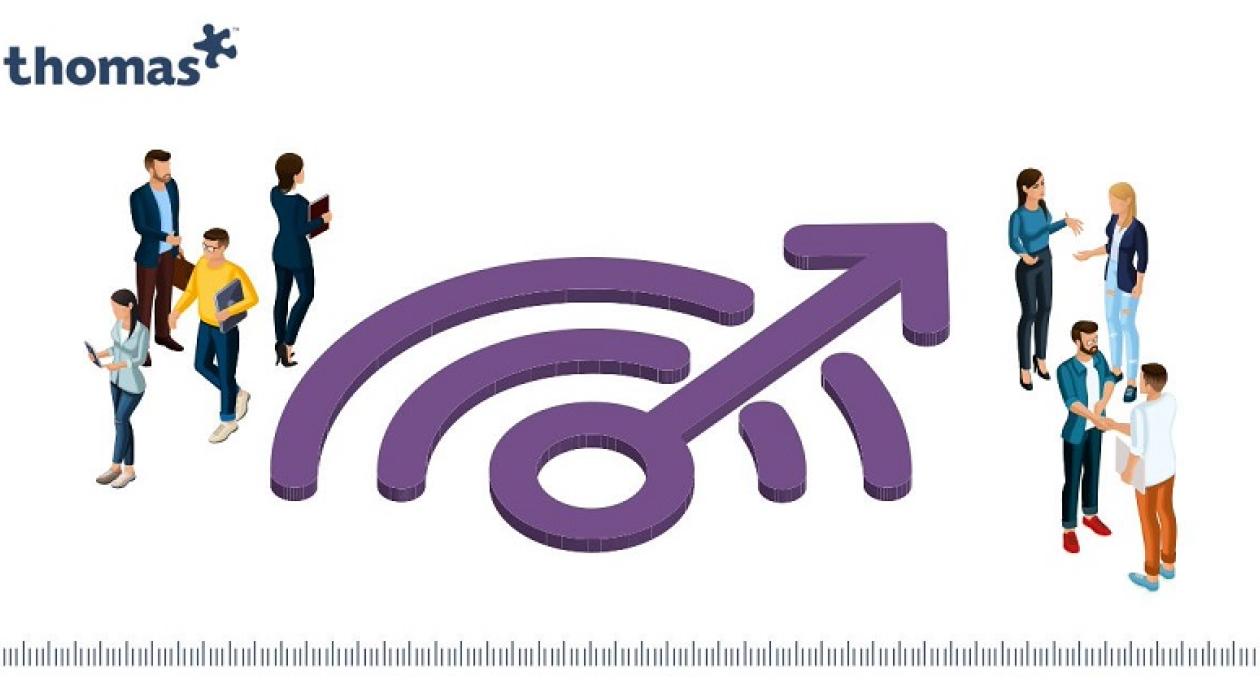Science is all about fact, right? Tangible, determinate, verifiable fact. So how can the vague and unquantifiable elements of personality possibly be measured by science?
In reality, personality is actually a lot less ethereal than you might think. Psychometric assessments offer ways to measure personality by looking at someone’s levels of characteristics such as conscientiousness, curiosity or competitiveness. Results can then be aligned with qualities required for success in the workplace – whatever workplace or role that may be.
How do we typically measure personality?
This is achieved using a question-based model, asking respondents to rate themselves based on their reactions to given situations, generally on a sliding or likert scale. Then algorithms are used to turn these subjective answers into objective personality traits.
The Big Five
The most trusted and verified psychometric model is one known as the Big Five. This is a measurement of personality looking at five different traits and can be used to determine how suited a person may be to a certain role or situation.
The five basic traits were identified in 1949 by D. W. Fiske (1949) and later expanded upon by other researchers including Norman (1967), Smith (1967), Goldberg (1981), and McCrae & Costa (1987). They are extraversion, agreeableness, openness, conscientiousness, and neuroticism. Our Guide, What Are The Big 5 Personality Traits? explains these in more detail.
Researchers spent years trying to pin down ways to measure personality as a way of analysing people’s qualities. At one point, Gordon Allport found over 4000 traits. Even when this was reduced to 16 it was seen as too complicated. This is where The Big Five personality traits began to grow in popularity.
This tried and tested model was adapted in 2006 by Ian MacRae and Adrian Furnham to become the HPTI (High Potential Trait Indicator), which today powers the Thomas Personality assessment. Based on Big Five theory, Thomas has optimised the assessment for the workplace using a six-trait model, measuring conscientiousness, adjustment, curiosity, risk approach, ambiguity acceptance and competitiveness. It has been extensively validated following in depth psychometric research.
Measuring personality in organisational behaviour
Before matching people to roles, it’s important to understand what works best in your team and organisation – in other words, what good looks like for you. This doesn’t stop at experience. To understand whether someone is likely to succeed in your organisation, you need the full picture, which means you need to look a little deeper – at people’s personalities.
You can do this by identifying who has been successful in the business historically. How does this person collaborate? How do they fit in with your business’ way of working? Which of their personality traits are the most obvious? These are the ones you’ll want to replicate.
It’s important to realise that “good” changes according to your organisation’s needs and isn’t always aligned to traditionally accepted measurements of a candidate such as work experience and qualifications. Psychometric assessments in recruitment work to benchmark candidates in a way that’s often difficult to do with other methods, such as interviews.
Measurement of personality traits to predict success
Knowing what’s required for a person to succeed in any particular role enables managers to use psychometric assessments to gauge how well a potential employee compares to these success criteria.
The Thomas Personality assessment is a vital tool for businesses to use in the pre-hire process, giving indispensable information on their candidates' personality traits, including:
- Whether they set themselves goals and targets, or prefer a more laid-back approach to work
- How they react to stress
- Their ability to handle new ideas, ways of working and change at work
- Their approach to risk and interpersonal conflict
- How competitive they are - do they strive to always be number 1?
This insight into measurement of personality can then be mapped to traits that are commonly found in those that are successful in specific roles - for example, a great sales manager might be very open to change and working in an ambiguous environment, while striving for success and should be able to constructively manage confrontations.
By scoring candidates against set criteria, it becomes easier to distinguish high potential employees and shortlist the most promising ones more quickly.
Furthermore, the assessment can be used to give extra insight into current employees and help managers to tailor their leadership style and team development plans to best support them. In challenging circumstances (such as those created by the COVID-19 pandemic), Thomas’ Personality assessment can be used to offer guidance on how to motivate individuals and understand who will respond positively under pressure and cope with uncertainty.
The role of science in business excellence
Organisations can engage with science to give them the best chance of optimised performance. They can do this by ensuring they have the people within the business who are best suited to the challenges of their roles, who will drive change and innovate. Personality assessments empower hiring managers to identify and secure these people, whether from internal or external sources.
Get in touch to see how we could help your organisation succeed through the use personality assessments for employment.




